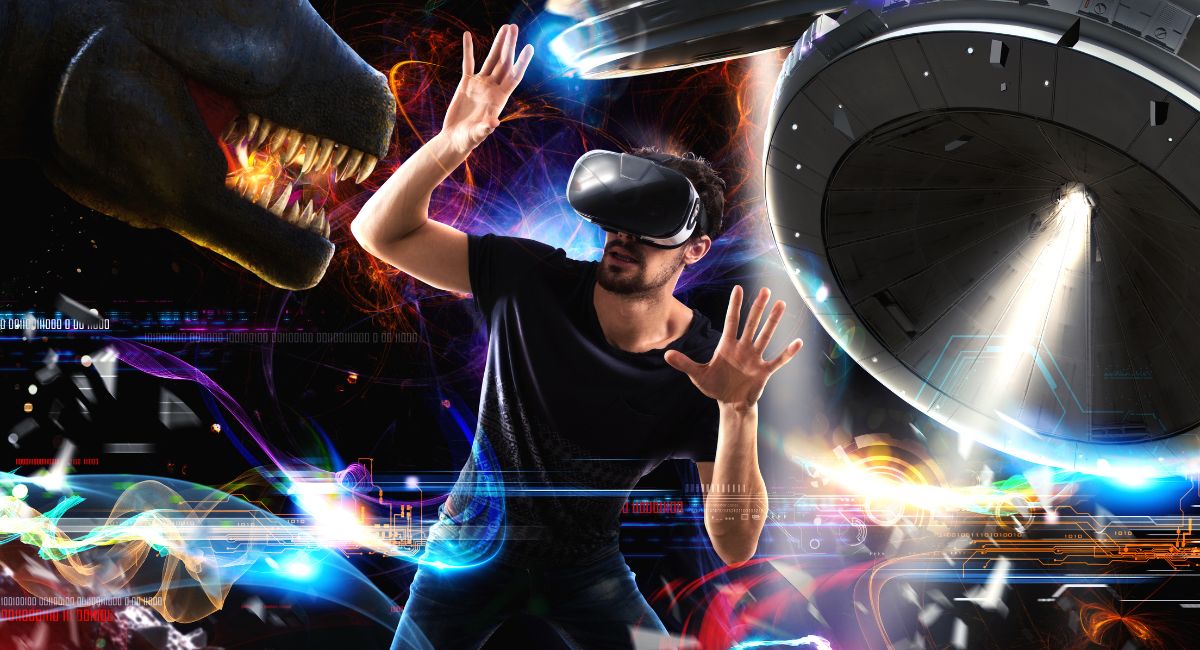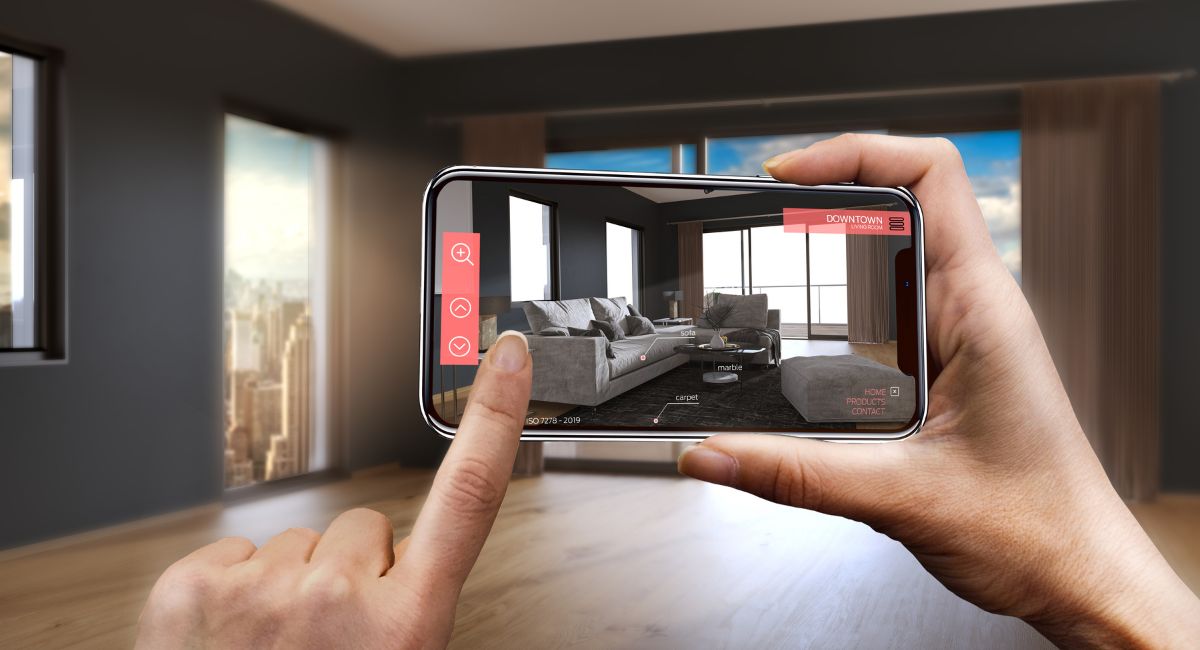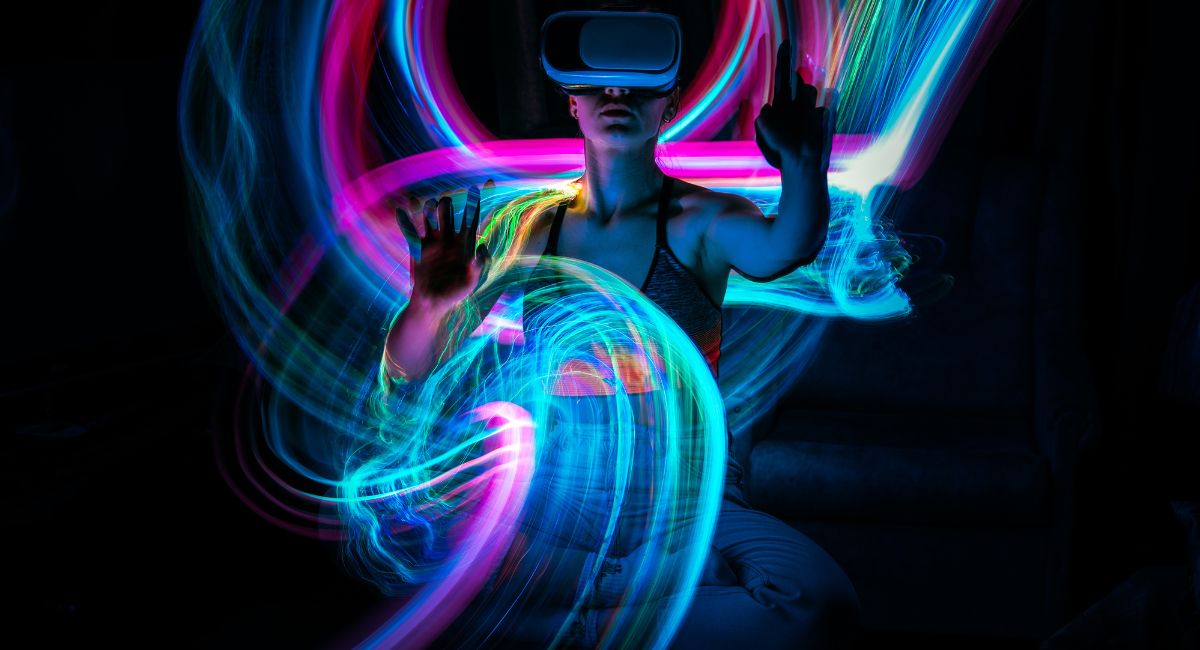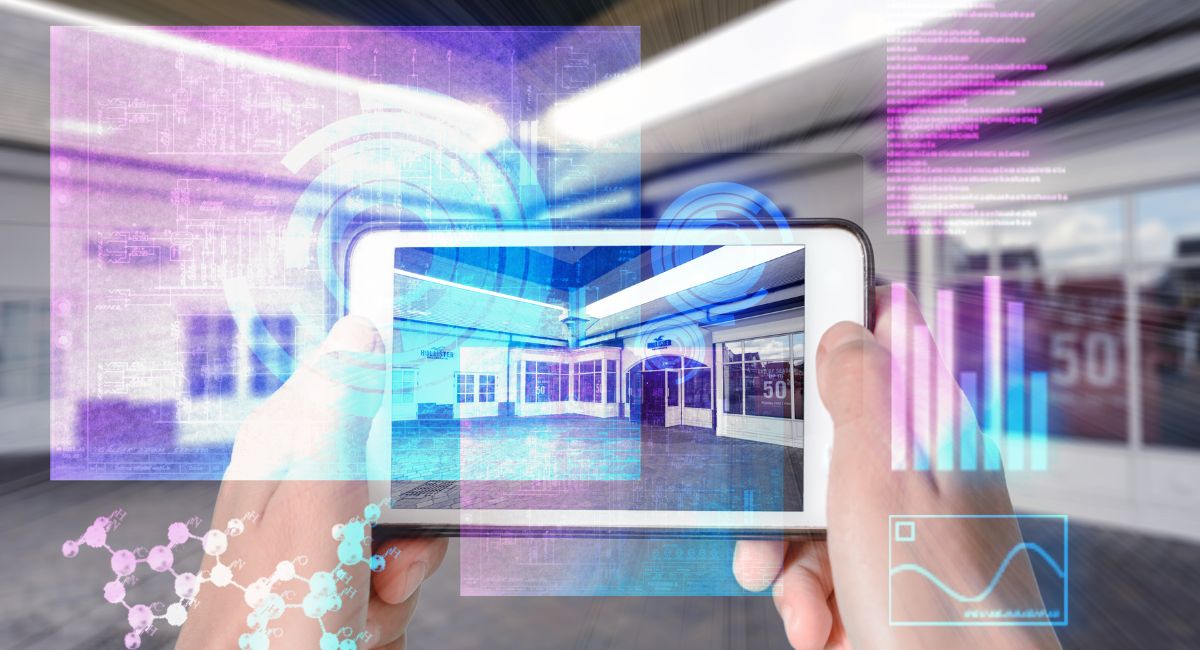How Augmented Reality In The Metaverse Works And Why Are They Important?

The metaverse, a digital universe where virtual and physical realities seamlessly intertwine, has become a focal point of innovation and exploration. At the forefront of this technological marvel lies augmented reality (AR), a transformative force that enriches our perception of the metaverse by overlaying digital elements onto the real world. In this comprehensive exploration, we will unravel the intricate workings of augmented reality in the metaverse, delving into its underlying technologies, applications, and the profound impact it has on our digital existence.
Understanding Augmented Reality:

Augmented reality, at its core, enhances our real-world experiences by blending digital content with the physical environment. Unlike virtual reality (VR), which immerses users in entirely virtual worlds, AR supplements our perception rather than replacing it. This is achieved through the integration of computer-generated images, sounds, or information into our real-time view.
How Augmented Reality Works:

Augmented Reality (AR) has emerged as a groundbreaking technology that seamlessly blends the digital and physical worlds, enhancing our real-time experiences by overlaying computer-generated content onto the physical environment. To comprehend the intricate workings of augmented reality, one must delve into the underlying technologies that make this transformative digital integration possible.
- Sensors and Cameras: At the heart of augmented reality devices lie an array of sensors and cameras. These sensors capture crucial data about the user’s surroundings, including depth, movement, and orientation. The cameras act as the eyes of the AR device, capturing the visual information needed for the system to interpret and augment the real-world environment.
- Computer Vision Algorithms: The captured visual data undergoes sophisticated analysis through computer vision algorithms. These algorithms enable the AR device to understand and interpret the information from the real world. Object recognition, feature tracking, and spatial understanding are key components of computer vision that allow AR systems to identify and analyze the user’s environment.
- Spatial Mapping: A fundamental aspect of AR is spatial mapping, which involves creating a three-dimensional map of the physical environment. Through spatial mapping, the AR system gains an understanding of the surfaces, objects, and spatial features in the real world. This map becomes the canvas on which digital content will be seamlessly overlaid.
- Simultaneous Localization and Mapping (SLAM): Simultaneous Localization and Mapping is a core concept in AR that ensures the accurate alignment of digital content with the real world. SLAM enables the AR device to simultaneously track its own position and orientation while mapping the user’s environment in real-time. This dynamic mapping ensures that digital augmentations remain precisely anchored within the physical space, creating a cohesive and immersive experience.
- Display Technology: AR devices employ various display technologies to present augmented content to the user. Transparent screens, holographic displays, or projection technologies are utilized to overlay digital elements onto the user’s field of view. This integration must be seamless and synchronized with the user’s perspective, requiring precision in both hardware and software components.
- User Interaction: Augmented reality often involves user interaction with the overlaid digital content. Touch gestures, voice commands, or motion sensing technologies enable users to engage with and manipulate virtual elements in real-time. This interactive aspect enhances the immersive nature of AR experiences, allowing users to actively participate in the blended reality.
- Integration with Environmental Data: To enrich the augmented experience, AR systems can integrate additional environmental data. This may include real-time information about the user’s location, weather conditions, or contextual data relevant to the user’s surroundings. This integration enhances the relevance and utility of AR applications across various domains.
Understanding the intricate interplay of these technologies provides insights into the complex process through which augmented reality works. As AR continues to evolve, advancements in hardware capabilities, computer vision algorithms, and user interface design contribute to increasingly sophisticated and immersive augmented experiences. From education and gaming to healthcare and industry, the versatile applications of augmented reality promise to redefine how we perceive and interact with the world around us.
Applications of Augmented Reality in the Metaverse:

As the metaverse continues to evolve, augmented reality (AR) emerges as a transformative technology, enriching digital experiences by seamlessly integrating virtual elements into the physical world. The versatile applications of Augmented Reality in the metaverse transcend entertainment, extending to education, commerce, social interactions, and beyond. Let’s delve into the vast and immersive realm of augmented reality in the metaverse.
- Virtual Social Interactions:
- Augmented reality in the metaverse redefines social interactions by introducing immersive experiences that go beyond traditional communication methods. Users can project lifelike digital avatars into the real world, enabling realistic face-to-face interactions in virtual spaces. From casual gatherings to business meetings, AR-driven social interactions foster a sense of presence and connectivity.
- Immersive Education and Training:
- Education in the metaverse takes a giant leap with augmented reality. AR applications enable immersive and interactive learning experiences, allowing students to visualize complex concepts, conduct virtual experiments, and engage in hands-on simulations. Training programs in various industries leverage AR to simulate real-world scenarios, providing practical skills in a virtual environment.
- Enhanced Navigation and Wayfinding:
- Navigating the metaverse becomes more intuitive with AR-driven wayfinding applications. Users can receive real-time, context-aware information overlaid onto their physical surroundings. Whether exploring virtual cities or navigating augmented maps, AR enhances spatial awareness and simplifies navigation within the metaverse.
- Virtual Commerce and Shopping:
- Augmented reality transforms the shopping experience in the metaverse by allowing users to visualize products in their real-world context. Virtual try-ons, product demonstrations, and interactive advertisements enable users to make informed purchase decisions. AR-driven commerce blurs the lines between online and offline shopping, offering a dynamic and personalized shopping journey.
- Gamified Experiences:
- Gaming within the metaverse takes on new dimensions with AR. Location-based AR games merge virtual and physical worlds, encouraging users to explore their surroundings while engaging in interactive gameplay. These gamified experiences foster community engagement, making the metaverse a dynamic and entertaining space.
- Interactive Art and Creativity:
- Augmented reality unleashes new possibilities for artistic expression within the metaverse. Artists can create interactive AR installations that respond to users’ movements and interactions. Virtual galleries and exhibitions enable users to explore and appreciate art in innovative and immersive ways, transcending the boundaries of traditional art experiences.
- Virtual Real Estate Exploration:
- In the metaverse, augmented reality is revolutionizing the way users explore virtual real estate. AR applications allow users to visualize and interact with virtual properties overlaid onto their physical surroundings. This immersive exploration enhances decision-making in virtual property investments and development.
- Healthcare Simulations:
- Augmented reality finds applications in healthcare simulations within the metaverse. Medical professionals can utilize AR to simulate surgeries, visualize complex medical data, and enhance medical training. Virtual patient interactions and diagnostic simulations contribute to improved medical education and training outcomes.
- Collaborative Workspaces:
- AR-driven collaborative workspaces redefine how teams interact within the metaverse. Virtual meeting rooms, collaborative design spaces, and shared whiteboards create immersive environments for remote collaboration. AR enhances communication and engagement, fostering a more dynamic and productive work experience.
- Live Events and Performances:
- Augmented reality transforms live events and performances in the metaverse. Users can attend virtual concerts, theater performances, or sports events with AR overlays that enhance the experience. Interactive elements and real-time information add a layer of engagement to live entertainment within the metaverse.
The applications of augmented reality in the metaverse are expansive and diverse, reshaping how we perceive and interact with the digital realm. From redefining social interactions to revolutionizing education, commerce, and beyond, AR in the metaverse opens up a realm of possibilities, creating a more immersive, interactive, and interconnected digital universe.
Also, read – NFTs In The Metaverse: Top 10 NFTs Are Becoming Very Important Part Of Metaverse
The Importance of Augmented Reality for the Metaverse:

As the metaverse rapidly takes shape as a vast and interconnected digital universe, augmented reality (AR) emerges as a linchpin technology, playing a pivotal role in shaping and enriching user experiences. The symbiotic relationship between augmented reality and the metaverse brings forth a myriad of benefits, influencing how we interact, learn, collaborate, and engage within this evolving digital space. Let’s delve into the significance of augmented reality for the metaverse, exploring its impact and envisioning future directions.
1. Enriching User Engagement:
- Augmented reality enhances user engagement within the metaverse by seamlessly blending digital content with the physical world. Users experience a heightened sense of immersion, with AR overlays adding layers of information, interactivity, and personalization. This enrichment of user engagement transforms passive interactions into dynamic, participatory experiences.
2. Realism and Presence:
- The integration of augmented reality contributes to a sense of realism and presence within the metaverse. Digital elements seamlessly coexist with the physical environment, creating a more convincing and authentic user experience. This realism enhances social interactions, making virtual connections feel more genuine and fostering a deeper connection with the metaverse.
3. Seamless Integration of Digital and Physical Realms:
- Augmented reality serves as the bridge between the digital and physical worlds in the metaverse. Users can interact with virtual objects and information within their real-world context, blurring the boundaries between the physical and virtual realms. This seamless integration enriches the metaverse with contextual relevance and practical applications across various domains.
4. Enhanced Spatial Awareness:
- Augmented reality significantly improves spatial awareness within the metaverse. AR applications provide users with real-time information overlaid onto their physical surroundings, aiding navigation, wayfinding, and location-based interactions. This heightened spatial awareness contributes to a more intuitive and user-friendly metaverse experience.
5. Transformative Educational Experiences:
- In the metaverse, augmented reality revolutionizes education by offering transformative learning experiences. AR applications enable immersive and interactive educational content, allowing users to visualize complex concepts, conduct virtual experiments, and engage in collaborative learning. This paradigm shift in education fosters innovation and inclusivity within the metaverse.
6. Innovation in Commerce and Shopping:
- Augmented reality fuels innovation in commerce and shopping within the metaverse. Virtual try-ons, interactive product demonstrations, and augmented shopping experiences redefine how users engage with products and make purchase decisions. AR-driven commerce adds a layer of interactivity and personalization, enhancing the overall shopping journey in the metaverse.
7. Collaborative Work Environments:
- The metaverse becomes a dynamic workspace with the integration of augmented reality. Collaborative work environments benefit from AR-driven virtual meeting rooms, shared whiteboards, and interactive design spaces. This fosters seamless remote collaboration, enabling teams to work together in an immersive and efficient manner.
Just step into the NBA Dallas Mavericks locker room in the amazing Over the Reality metaverse! 🏀🔥 It’s mind-blowing how augmented reality brings the game to life. And guess what? You can even click on the players’ jerseys and buy them straight from the team shop! 🛍️💯
It will… pic.twitter.com/fJxiVHGnoU— stadiuminmetaverse (@stadiuminmeta) June 19, 2023
Impact and Future Directions:

The impact of augmented reality on the metaverse is profound, influencing not only user experiences but also the dynamics of digital collaboration, commerce, and education. As we look toward the future, several directions highlight the ongoing evolution and significance of AR in the metaverse:
1. Advancements in AR Hardware:
- Future developments in augmented reality hardware will play a crucial role in enhancing the capabilities of AR within the metaverse. Lighter, more immersive AR glasses with advanced features such as gesture recognition and eye-tracking will contribute to a more seamless and user-friendly experience.
2. Integration of AI and Machine Learning:
- The incorporation of artificial intelligence (AI) and machine learning (ML) into AR applications within the metaverse will lead to more intelligent and adaptive experiences. These technologies will enable AR systems to better understand user preferences, optimize content delivery, and provide personalized interactions.
3. Ubiquitous AR Experiences:
- The future of augmented reality in the metaverse envisions ubiquitous experiences that seamlessly integrate into our daily lives. From navigation and education to entertainment and social interactions, AR will become an integral part of our digital existence, enhancing various aspects of our interconnected virtual world.
4. Enhanced Interactivity and Haptic Feedback:
- Advancements in haptic feedback technology will contribute to a more immersive AR experience within the metaverse. Users may experience tactile sensations and feedback, further blurring the line between the physical and virtual realms. This enhanced interactivity will redefine how users engage with AR content.
5. Socially Driven AR Applications:
- The future of Augmented Reality in the metaverse will see an increasing emphasis on socially driven applications. Collaborative AR experiences, social gaming, and interactive social platforms will foster deeper connections and shared experiences, making the metaverse a vibrant and dynamic social space.
In conclusion, the importance of augmented reality for the metaverse lies in its ability to elevate and enrich our digital experiences. From enhancing user engagement to transforming education, commerce, and collaboration, AR serves as a cornerstone technology shaping the future of the metaverse. As we navigate this evolving digital landscape, the continued integration of augmented reality promises to redefine how we perceive, interact with, and contribute to the ever-expanding metaverse.


























































